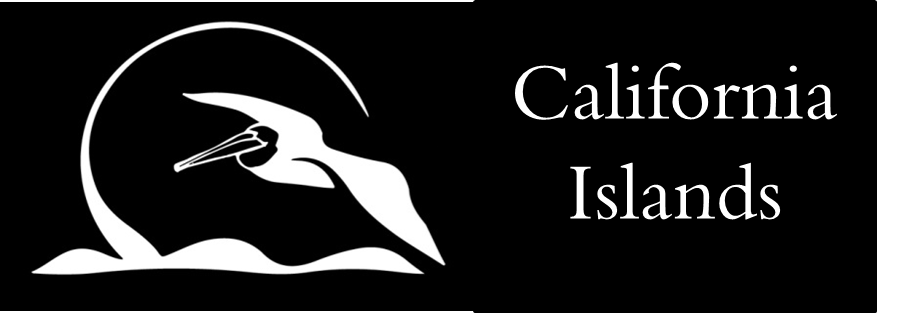Biosecurity Templates
TABLE OF CONTENTS
POSITION DESCRIPTION TEMPLATE
The most successful biosecurity programs are supported by a culture of biosecurity throughout the organization. This culture is fostered when everyone within the organization(s) that manage the Island Protected Area understands the importance of biosecurity and their critical role in protecting island resources from invasive species. Ideally, one or more dedicated staff can be identified whose primary responsibility is to lead and manage an island biosecurity program. However, staff in a variety of positions and departments, including natural and cultural resources, leadership, communications, operations, interpretation, transportation and more, can all play important roles in promoting island biosecurity. Thus, biosecurity roles and duties should be included in all appropriate position descriptions and relevant work plans.
Here we have developed a template for integrating biosecurity roles into new or existing job descriptions, both for positions that are entirely focused on biosecurity, and for positions with more limited time allocated to biosecurity program support. The template was designed for DOI agencies, but can easily be revised for use by other agencies and organizations. The template includes language and suggested General Schedule (GS) levels for a dedicated Island Biosecurity Manager position, an Island Biosecurity Technician position, and sample language for other positions with significant roles to play.
For additional context, additional examples of position description from Hawai’i National Park and The Nature Conservancy are included.
Figure 1. Cross-divisional biosecurity responsibilities for Island Protected Area staff.
BOILERPLATE CONTRACT LANGUAGE TEMPLATE
This document provides biosecurity-specific boilerplate language that should be included in contracts, grants, agreements, permits, and other legally binding documents for Island Protected Areas. This may be particularly important in contracts that involve transportation of people and cargo to islands and for island-based operations. The inclusion of biosecurity language in legally binding documents enables the Island Protected Area managers to hold the contractor or other participating parties accountable for their part in preventing, quickly detecting, and effectively responding to introductions of invasive species. The template includes definitions for commonly used biosecurity terms, guidance for examples of necessary actions (e.g., how to properly disinfect gear and who is responsible to carry out the actions), and proper biosecurity threat response steps.
For additional context, sample documents with biosecurity contract language from Channel Islands National Park and the Island of Hawai’i are provided.
Biosecurity Language to Be Inserted into Contracts & Agreements- 2021
NEW EMPLOYEE ORIENTATION CHECKLIST
This checklist is for use by Channel Islands National Park supervisors when on-boarding a new employee or welcoming an employee to a new position. It includes a set biosecurity-related resources that the employee should become familiar with as they become oriented to their new position. It is the supervisor’s responsibility to either conduct the biosecurity orientation themselves or coordinate one with the Biosecurity Team to ensure the employee is properly educated on biosecurity information and resources.
BIOSECURITY PROGRAM CHECKLIST
This document outlines the programmatic goals and actions necessary to effectively implement a biosecurity program for the Channel Islands by displaying the core, recurring activities at a high level. This does not include short-term, ad-hoc projects that may occur.
STANDARD OPERATING PROCEDURES (SOPs)
Standard operating procedures (SOPs) for Island Protected Area biosecurity programs can provide clear guidance, reduce impaired decision-making during the “fog of war", and outline step-by-step actions that should be taken before, during, and after biosecurity incursions occur. Well-written and enforceable SOPs create consistency across biosecurity measures, reducing the risk of errors and omissions across an organization or agency. Sometimes it only becomes apparent that an SOP is needed after a biosecurity crisis has already occurred; thus, these documents should be continually updated and adapted as managers learn from experience. For example, a suspected rat sighting on Santa Cruz Island highlighted that staff were not adequately equipped to act quickly, and materials necessary for an effective response were not in place. Rather than initiating an immediate response, staff spent the critical early period of this potential incursion in decision-making and resolving operational questions that could have been addressed in advance. Therefore, we created the Rat Incursion SOP in which we identify and assign roles and responsibilities for known and suspected rat incursions, have action plan ready in advance, and ensure that necessary equipment is maintained and readily available for quick and effective responses.
Other Biosecurity SOPs may address biosecurity detection systems (e.g. biosecurity camera maintenance) or the handling of high-risk materials such as green waste and potting soil. Example SOPs from the California Channel Islands National Park and Hawai’i Volcanoes National Park are provided here.
Acting Biosecurity Manager Guidance Template
Biosecurity Inspection Survey Template
Channel Islands Rat Incursion SOP
CHIS Biosecurity Camera Maintenance
Channel Islands Potting Soil SOP
Draft Argentine Ant EDRR
Channel Islands Incursion SOP-
Hawaii Volcanoes Green Waste SOP
Hawaii Volcanoes Invasive Pest SOP

